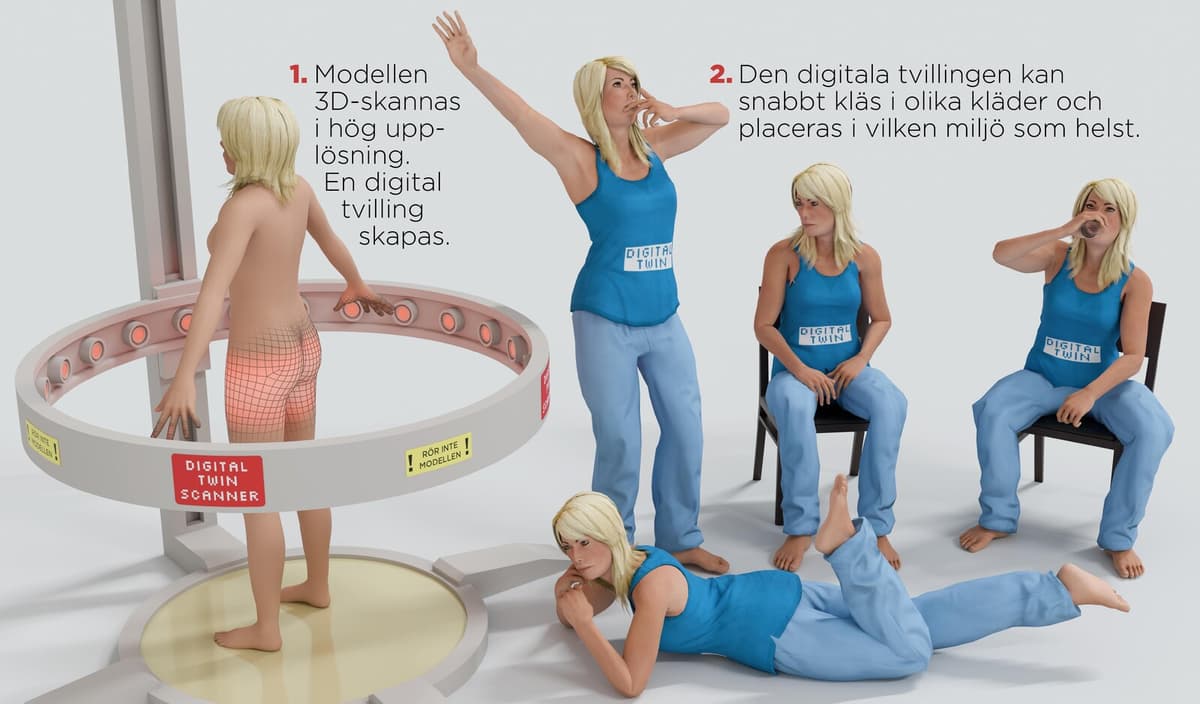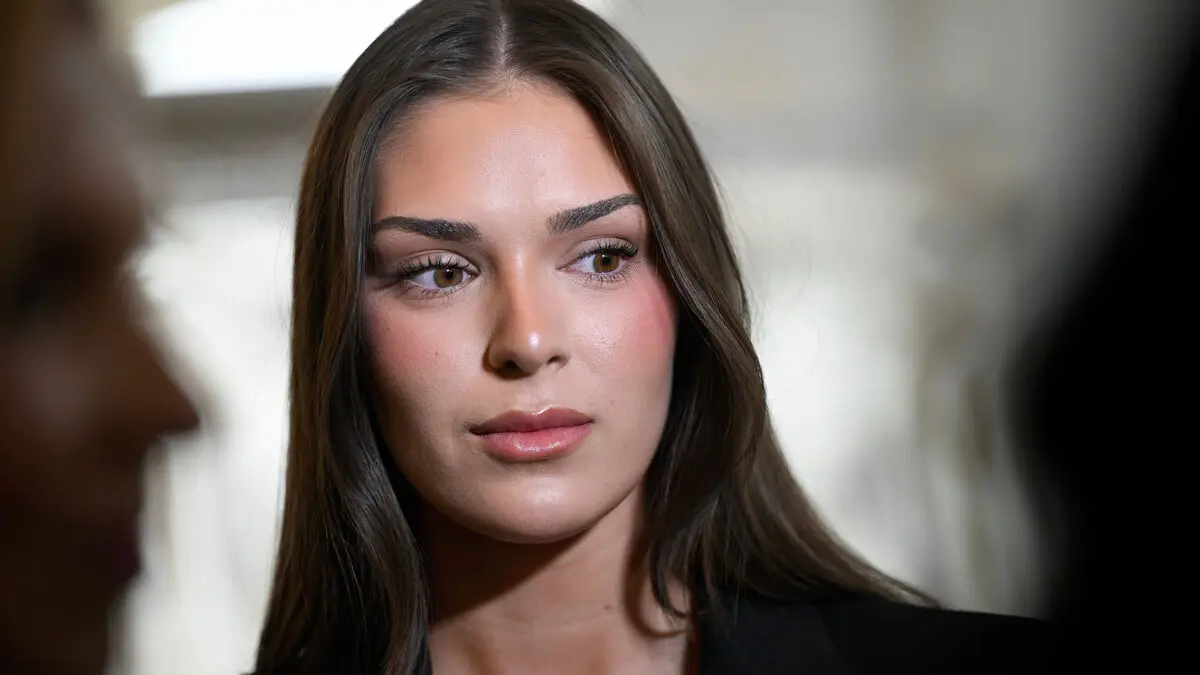The model Vilma Sjöberg is crossing the street in New York in the evening sun. White shirt, white pants. Her blonde shoulder-length hair is moving in the wind, a yellow taxi is passing behind.
The image has never been taken, but for the human eye, it's impossible to determine if it's AI-generated or not.
It's an image of me. But it's not me. It was interesting to see how good it actually was, says Sjöberg to the industry website Business of Fashion, and describes the experience as both exciting and somewhat uncomfortable.
Own Twin
Swedish fashion giant H&M is behind the initiative. 30 models are planned to be scanned using the Swedish startup Uncut and get a "digital twin", an avatar, that the model themselves own the rights to.
H&M produces thousands of images for their various marketing and sales channels every year, a number that has increased significantly over the past decade.
In line with e-commerce expanding over the past ten years, the need for images as marketing instruments or sales tools has drastically increased in the world, says Jörgen Andersson, who is the overall creative director at H&M, to TT.
Generative AI is storming into the fashion world.
We want to open up the moral and ethical part of this and say: How do you do this in a proper way?
The twin can, in theory, do everything the real model can. It can quickly dress up in a multitude of different clothes or be placed in any part of the world. It's never tired or jet-lagged, doesn't age, and its body doesn't change. The idea is that the person behind the model should get paid when the clone works.
Changing Industry
Lotten Breitholtz at the agency Mikas, which Vilma Sjöberg is affiliated with, writes in an email to TT that "we as actors in a global industry must relate to a rapidly changing, technological reality".
"AI's entry into all types of labor markets can come to mean significant changes. In our industry, many creative professions are at stake, and several job roles will be affected by automation".
Digital twins are a way to protect models from their identities being used without permission in AI-generated material, she reasons.
"Our hope is that the entire industry would be needed and jobs would be retained; even hairstylists, makeup artists, stylists, and others would be needed in the work and get paid when the AI-generated material is used".
Jörgen Andersson sees primarily that the clone can be used in the online store, mainly used on mobile, in what he calls "display window images".
Images that people will anyway just turn and twist to make a purchase. Then maybe the real model can be used in a large-scale image production for images that are meant to be seen out on the street instead.
Created Levi's Model
AI's advance in the fashion world has raised concerns. Dutch Lalaland.ai offers fashion companies entire AI-generated models, dressed in the company's clothes.
As a black person, I never saw models that looked like myself. We wondered why fashion brands couldn't show more models in different sizes, of different ethnicities and ages, says CEO and founder Michael Musandu.
The company was founded in 2019 and claims to have built a partially own tool, trained on images they have bought the rights to. Among customers are, among others, jeans giant Levi's.
You would be surprised if you knew how many brands are already using AI models because you simply can't see the difference, he says.
Actors who have wanted to be at the forefront have faced criticism. Musandu says that something that challenges an industry will raise reactions.
Fear and concern are justified, and we have tried to address them. But it's about complementing rather than replacing. None of the companies we work with have scaled down on traditional photography, he says.
Real models and photography will be needed in the future, and believes, like Jörgen Andersson, that it's primarily the last step – when the customer is to buy the products – that AI comes into the picture.
Jörgen Andersson emphasizes that AI will need to be controlled by creative humans, that professionals need to learn it – just like they learn other new tools.
I have absolutely met fear and I understand the fear. My advice is to embrace AI. I believe this is the beginning of a human renaissance when it comes to creativity and culture.
Passion and Speed
When the digital clones can appear in H&M contexts is unclear. Jörgen Andersson emphasizes that it's not about "H&M models" but that the fashion giant is a client.
We approach this issue with incredible respect and we won't let go or do anything that we – models, creators – aren't 100 percent satisfied with. We're driving this with great passion and speed ahead, but it's hard to say when we're satisfied, he says.
Companies like Deep Agency, Lalaland.ai, Botika, and several others offer AI models for various assignments. It can, for example, be about uploading images of clothes and seeing how they look on a model.
AI technology's entry into the fashion world raises questions about what happens to the models and all the surrounding professions that are currently required to take fashion pictures. Several companies that are at the forefront have faced strong criticism.
In 2019, supermodel Bella Hadid was seen kissing the AI-generated influencer Lil Miquela for Calvin Klein. The move was not well-received by everyone, and the company admitted that the campaign could be perceived as "queerbaiting" (simplified: trying to attract LGBTQ+ audience without actually portraying anything queer).
In 2023, jeans company Levi's stated that they would introduce AI-generated models to increase diversity, including when it comes to skin tone.
In 2025, H&M announced that they are experimenting with AI technology and collaborating with the modeling industry to create digital twins of fashion models, which the original models will own the rights to.





